The discovery of a black bag containing bundles of cash near a hiking trail in Taipei’s Neihu District (內湖) means that most of the NT$83 million (US$2.6 million) stolen from First Commercial Bank’s (第一商業銀行) automated teller machines (ATMs) earlier this month has been recovered, officials said yesterday.
Based on information provided by Latvian suspect Andrejs Peregudovs, Criminal Investigation Bureau (CIB) and Taipei police units searched Sihu Park (西湖公園) and were able to find the bag, which was hidden under a pile of trash on a rarely used hiking trail.
However, exhilaration over the discovery, which initially was thought to be the more than NT$22 million missing after the recovery of NT$60.24 million from a Taipei hotel room on Sunday, was tempered last night after the money was counted.
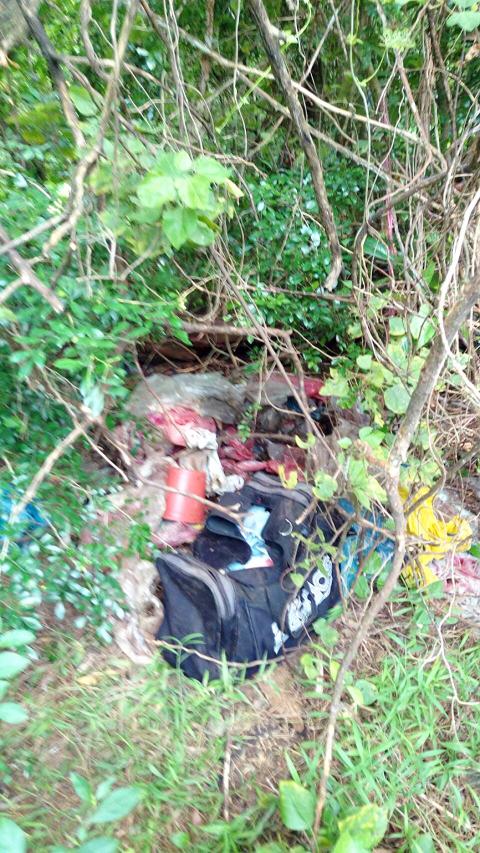
Photo: Chen Yi-yun, Taipei Times, from a police photo
It amounted to NT$12.63 million, leaving NT$10 million unaccounted for.
Investigators said that they would continue their hunt for the missing cash.
As part of their investigation, police and prosecutors took Peregudovs out of the Taipei Detention Center yesterday morning so he could retrace his movements around Taipei.
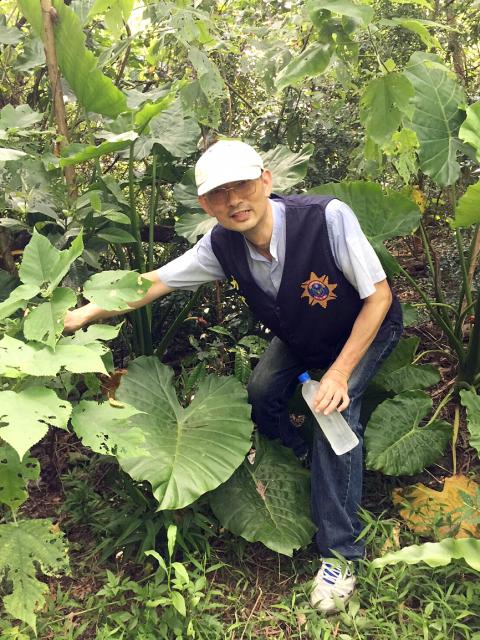
Photo: Chen Yi-yun, Taipei Times, from a police photo
They asked him for the whereabouts of a bag he was seen carrying in Neihu in surveillance camera footage.
Peregudovs was taken to Sihu Park, but he said he could not remember the exact location where he had left the bag, because it had been late at night, telling investigators that he had tossed the bag into a grass overgrowth next to a hiking trail.
After pressing him for more details, investigators checked GPS positioning on maps of the park, and conducted an extensive search in the area. The bag was found at about noon.
Peregudovs was taken back to Sihu Park in the afternoon so he could reconstruct his movements for investigators and show how he had disposed of the bag.
When shown the black bag, he nodded in agreement when he was asked to identify it, saying that it contained the rest of the money from the heist, Taipei Xinyi District (信義) Police Precinct chief Wu Ching-tien (吳敬田) said.
Peregudovs had previously told police that the remaining NT$23.03 million had been transferred to Moscow, but officials said they were convinced that it was still in Taiwan because there was no evidence any of the 13 heist suspects who fled the country had large amounts of cash with them when they left.
The three suspects in custody — Peregudovs, Romanian Mihail Colibaba and Moldovan Niklae Penkov — only arrived in Taipei after the heist was committed to handle the stolen money and get it out of the country, officials said.
First Commercial Bank executives said they were pleased with the efficiency of the police and announced that the bank would donate NT$2 million to a group that supports Taipei police.
Additional reporting by CNA

CHIP WAR: The new restrictions are expected to cut off China’s access to Taiwan’s technologies, materials and equipment essential to building AI semiconductors Taiwan has blacklisted Huawei Technologies Co (華為) and Semiconductor Manufacturing International Corp (SMIC, 中芯), dealing another major blow to the two companies spearheading China’s efforts to develop cutting-edge artificial intelligence (AI) chip technologies. The Ministry of Economic Affairs’ International Trade Administration has included Huawei, SMIC and several of their subsidiaries in an update of its so-called strategic high-tech commodities entity list, the latest version on its Web site showed on Saturday. It did not publicly announce the change. Other entities on the list include organizations such as the Taliban and al-Qaeda, as well as companies in China, Iran and elsewhere. Local companies need
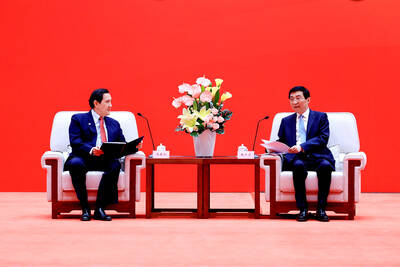
CRITICISM: It is generally accepted that the Straits Forum is a CCP ‘united front’ platform, and anyone attending should maintain Taiwan’s dignity, the council said The Mainland Affairs Council (MAC) yesterday said it deeply regrets that former president Ma Ying-jeou (馬英九) echoed the Chinese Communist Party’s (CCP) “one China” principle and “united front” tactics by telling the Straits Forum that Taiwanese yearn for both sides of the Taiwan Strait to move toward “peace” and “integration.” The 17th annual Straits Forum yesterday opened in Xiamen, China, and while the Chinese Nationalist Party’s (KMT) local government heads were absent for the first time in 17 years, Ma attended the forum as “former KMT chairperson” and met with Chinese People’s Political Consultative Conference Chairman Wang Huning (王滬寧). Wang
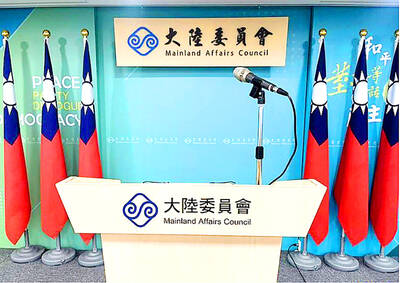
CROSS-STRAIT: The MAC said it barred the Chinese officials from attending an event, because they failed to provide guarantees that Taiwan would be treated with respect The Mainland Affairs Council (MAC) on Friday night defended its decision to bar Chinese officials and tourism representatives from attending a tourism event in Taipei next month, citing the unsafe conditions for Taiwanese in China. The Taipei International Summer Travel Expo, organized by the Taiwan Tourism Exchange Association, is to run from July 18 to 21. China’s Taiwan Affairs Office spokeswoman Zhu Fenglian (朱鳳蓮) on Friday said that representatives from China’s travel industry were excluded from the expo. The Democratic Progressive Party government is obstructing cross-strait tourism exchange in a vain attempt to ignore the mainstream support for peaceful development
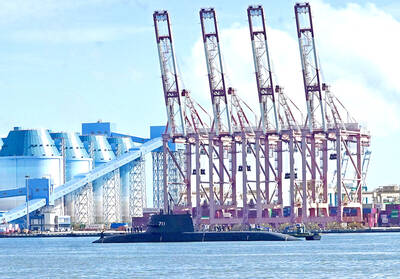
DEFENSE: The US would assist Taiwan in developing a new command and control system, and it would be based on the US-made Link-22, a senior official said The Ministry of National Defense is to propose a special budget to replace the military’s currently fielded command and control system, bolster defensive resilience and acquire more attack drones, a senior defense official said yesterday. The budget would be presented to the legislature in August, the source said on condition of anonymity. Taiwan’s decade-old Syun An (迅安, “Swift Security”) command and control system is a derivative of Lockheed Martin’s Link-16 developed under Washington’s auspices, they said. The Syun An system is difficult to operate, increasingly obsolete and has unresolved problems related to integrating disparate tactical data across the three branches of the military,